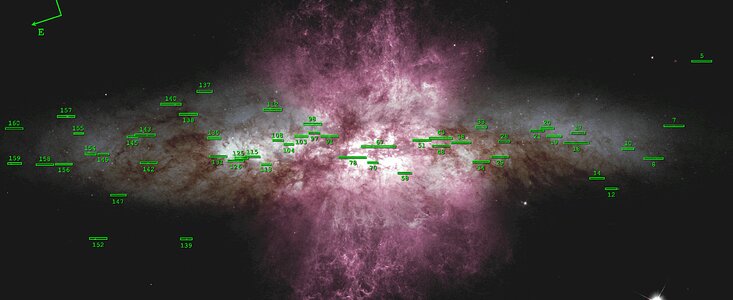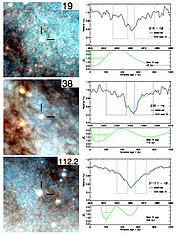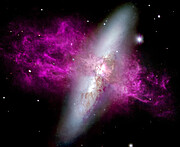Dating young star clusters in starburst galaxy M82
24 Junio 2009
Aimed at deciphering the secrets of archetypal starburst galaxy M82, the Gemini Multi-Object Spectrograph (GMOS) on Gemini North was employed by a team of UK- and US-based astronomers, led by Iraklis Konstantopoulos of University College London (UCL). The astronomers assembled key data for the largest sample of young extragalactic star clusters to date. M82 presents a gas, dust and stellar system that has intrigued scientists for decades due to its irregular, dusty appearance and extravagant super-galactic wind (see geminiann09013a).
Konstantopoulos et al. used the Gemini spectra to derive the age of 49 clusters in the disk, nucleus and halo of the galaxy (geminiann09013b). The resulting demographics were used to investigate the starburst history of M82, thus demonstrating the usefulness of star clusters as probes of star formation in environments where stars are too faint to be observed. On this basis, the observations were compared to theoretical models of starburst evolution in M82 (Förster Schreiber et al., 2003) and simulations that studied the interaction between M82 and its massive neighbour, M81, and the consequent burst of star formation (Yun et al., 1999).
In addition to deriving clusters ages, the group were able to establish a clear picture of this dusty, edge-on galaxy by combining radial velocity information with optical and near-IR imaging from the HST as well as CO observations from the Owens Valley Radio Observatory millimeter interferometer (Walter, Weiss & Scoville, 2002).
The combination and interpretation of the multi-wavelength data-set shows that the galaxy is far simpler than had previously been thought: it has a regular, two-armed spiral structure that is obscured in a highly irregular fashion by gas and dust perturbed by the recent interaction of the last ~220 million years. This is exemplified by the finding that the bright region 'B' (comparable to the nucleus in terms of apparent luminosity) is no more than an “artefact”: a hole in the dust distribution.
For more details, see the full article “A spectroscopic census of the M82 stellar cluster population”, by Iraklis S. Konstantopoulos, Nate Bastian, Linda J. Smith, Mark S. Westmoquette, Gelys Trancho and Jay S. Gallagher, The Astrophysical Journal, 701:1015-1031, August 20, 2009.
The content of the article represents a large part of Konstantopoulos (UCL) PhD thesis. This work falls under two large Gemini projects: one is an investigation of M82 (led by Linda Smith) with respect to its star cluster content (presented here), the interstellar medium and super-galactic wind of M82 (led by Mark Westmoquette, University College London). The other, headed by Gelys Trancho (Gemini Observatory), is focused on the study of star cluster formation in interacting and merging galaxies.




